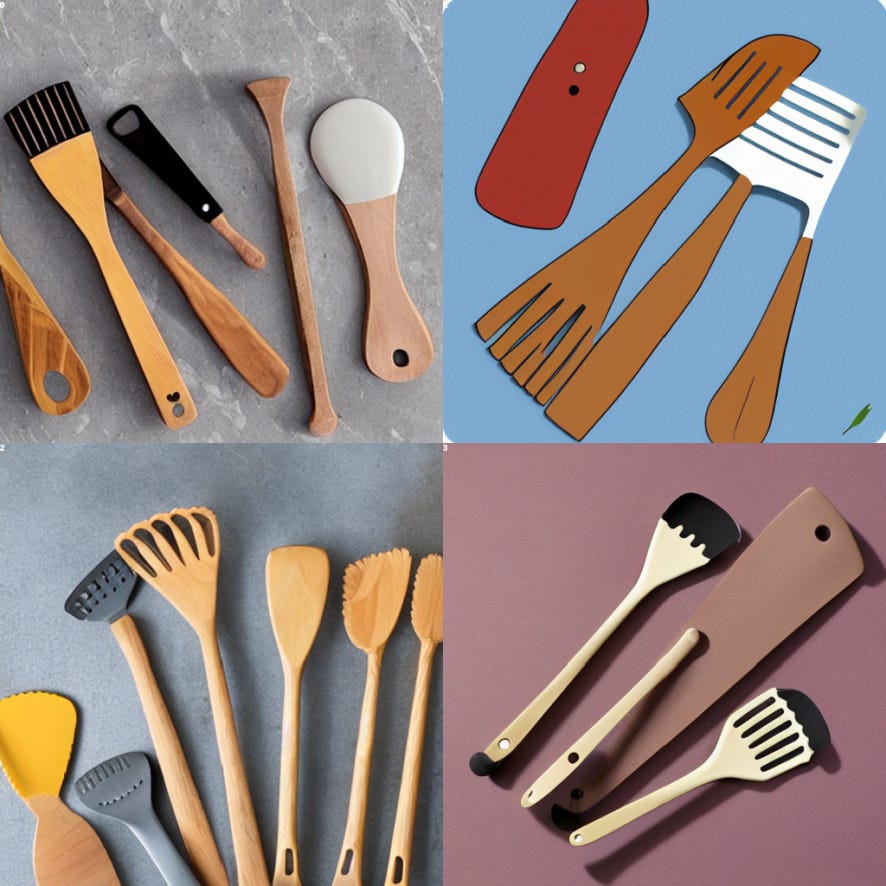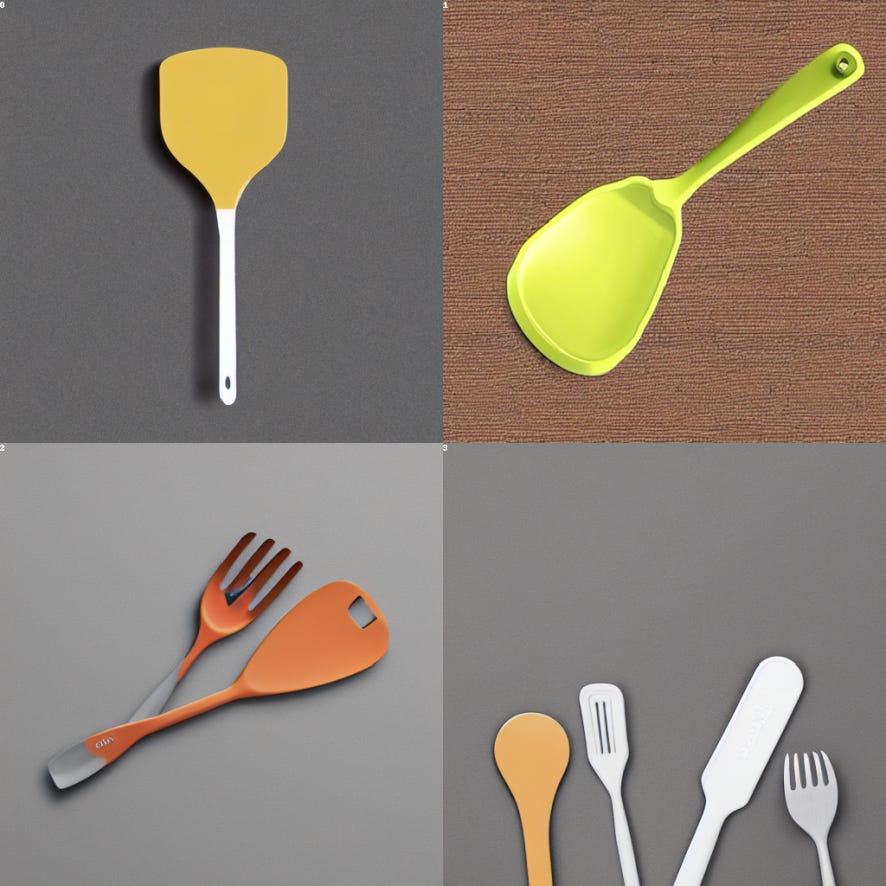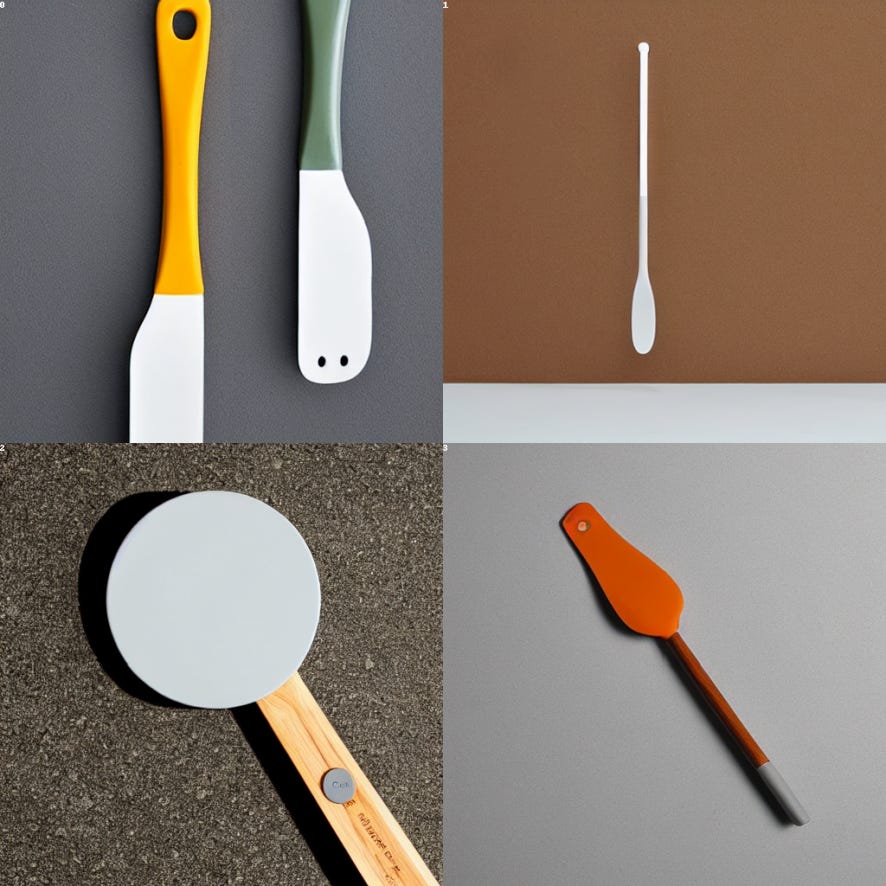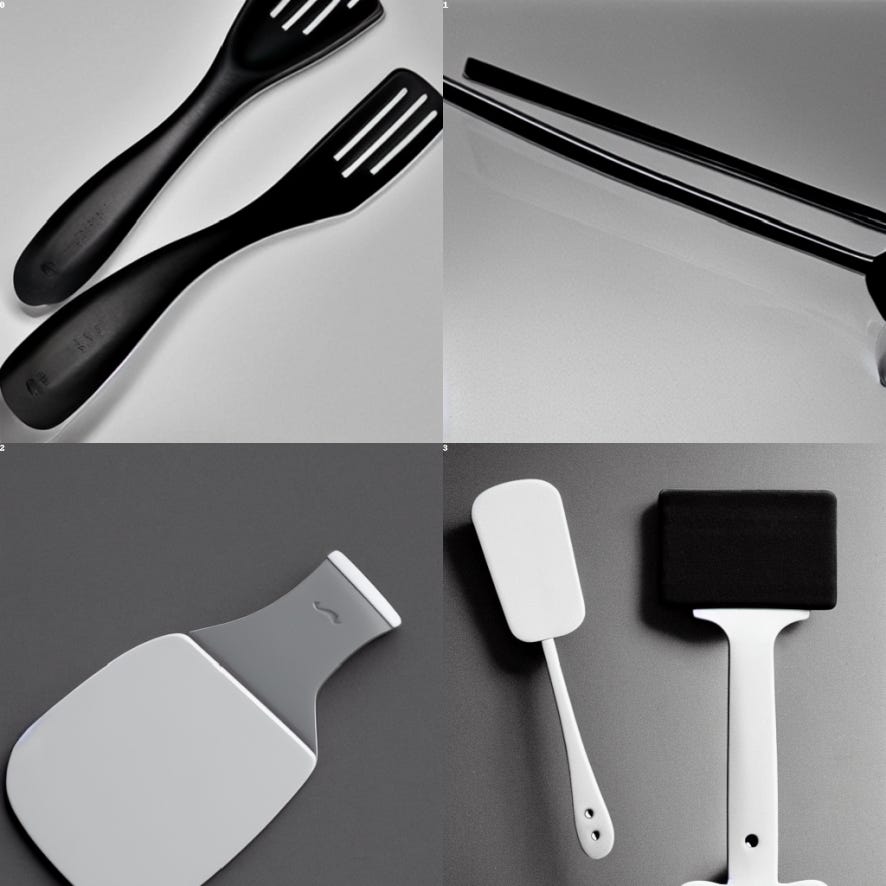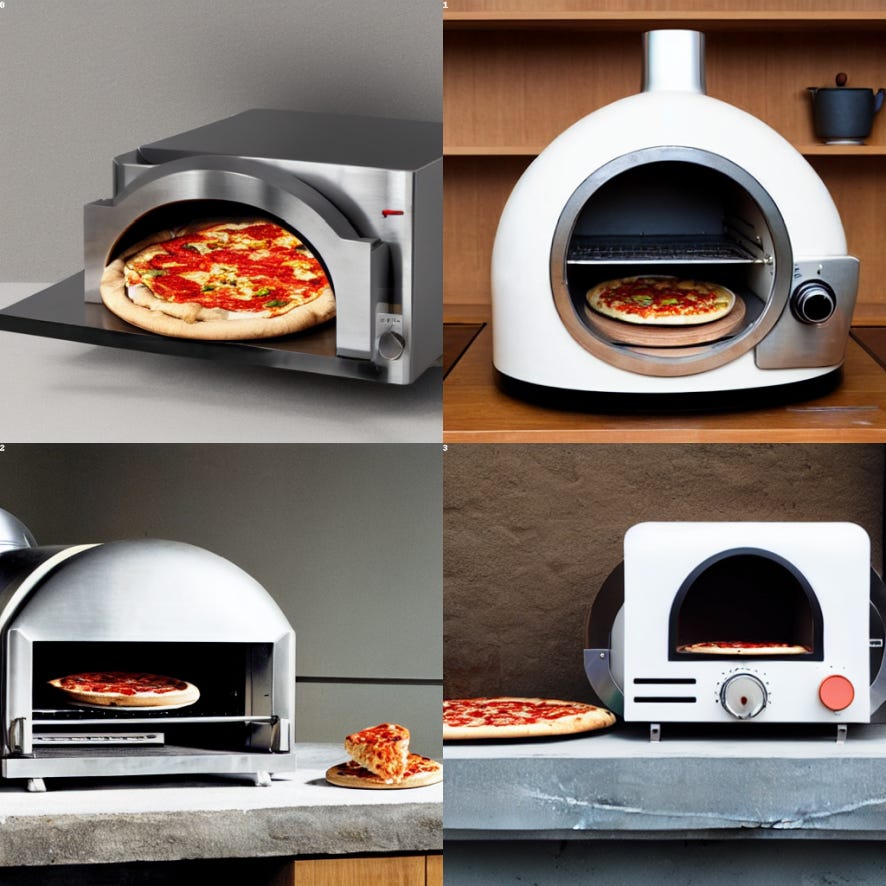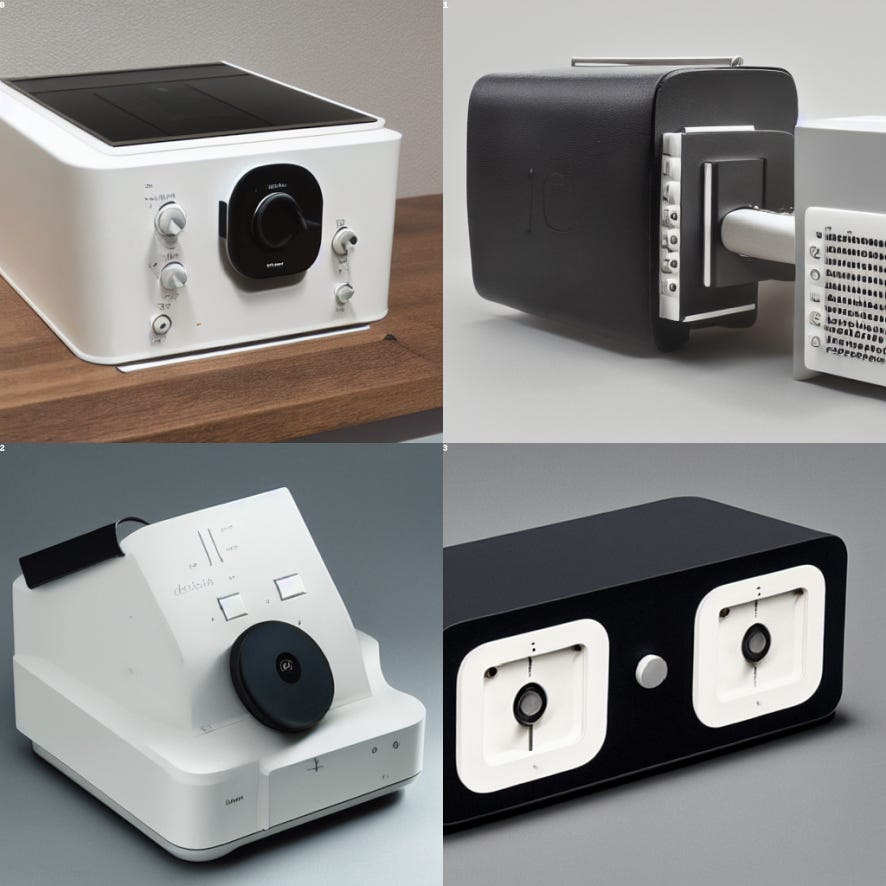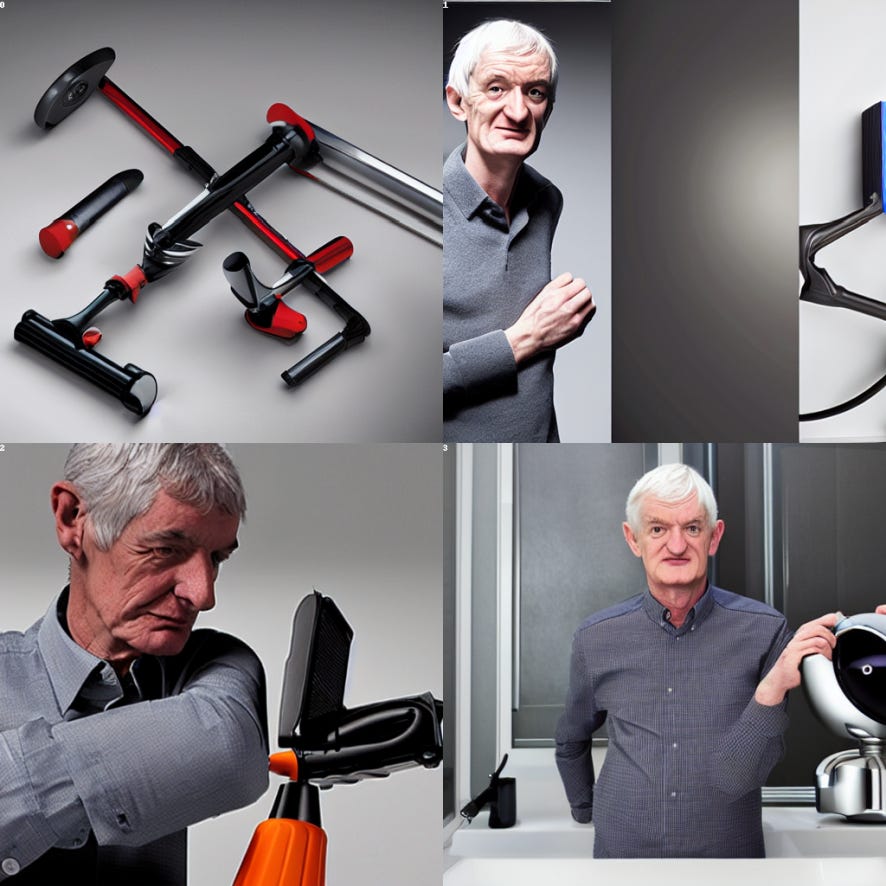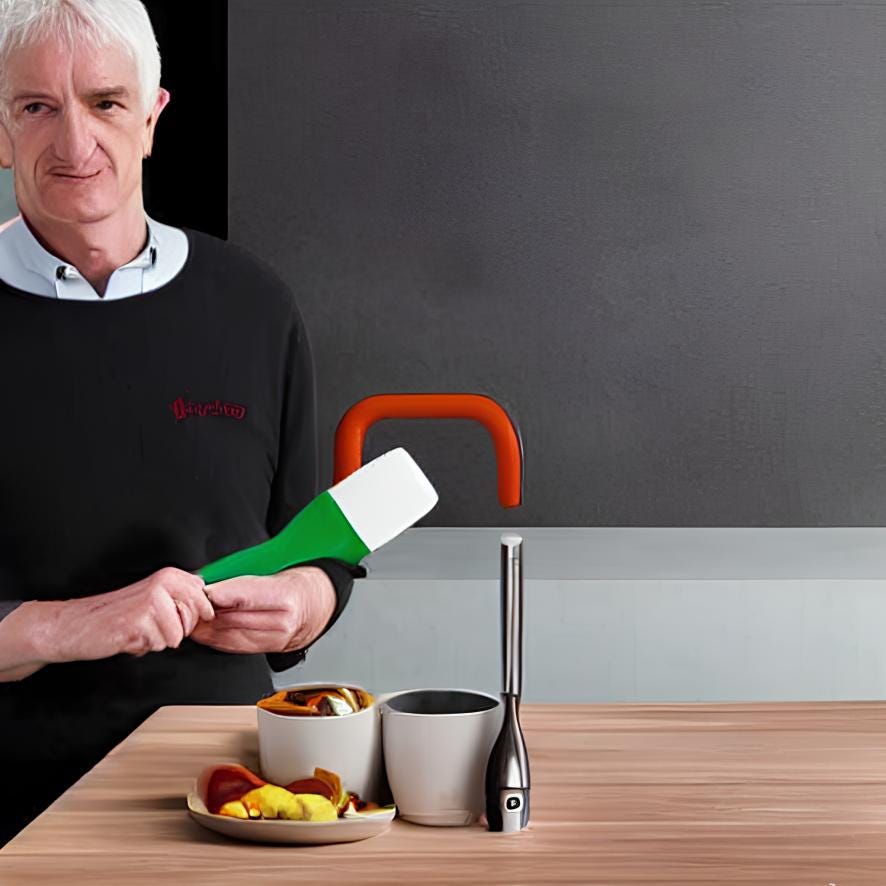Spatula City: Product Design with Generative Models
“Where did you get that lovely spatula?” [1]
I love using a good spatula when cooking. In this post, I’ll explore how Stability Diffusion, a generative image model, can be used to support product design ideation and exploration. Stability Diffusion (SD) can generate new images based on a text prompt. In the below images, I share a set of images created by SD and, in the caption, I share the prompt that created the image.
If I just use the term “spatula,” SD provides a wide range of different spatulas. Some of them are interesting and nice.
If I want something more striking, I can add the prompt “iconic design”:
I could use many different additions, like “beautiful” or “functional,” etc. Another approach, however, is to see how the style of a favorite product designer might manifest in the domain of spatulas. For instance, I’m a big fan of Dieter Rams. I don’t think he ever designed spatulas, but if he did, what would they look like?
I’m pretty impressed, actually. Some of these spatulas look like something I’d like to use. But, first-year Industrial Design Engineering students at Delft don’t design spatulas. Last year, I think they designed pizza ovens. What would a Dieter Rams pizza oven look like?
Not a bad starting point for a first-year design student, if you ask me. In case you are curious about the Dieter Rams style, the following image gives the right vibe:
Can this work well for other designers, like James Dyson?
I love my Dyson vacuum cleaner— how about the Dyson spatula?
Not bad. This short exposition shows that generative image models can be a useful approach to investigating a product design space. Because Dieter Rams and James Dyson never designed spatulas, this demonstration shows that Generative Models can learn a product designer’s style in a generalizable manner.
[1] Yankovic, A. “Spatula City.” UHF, 1989




